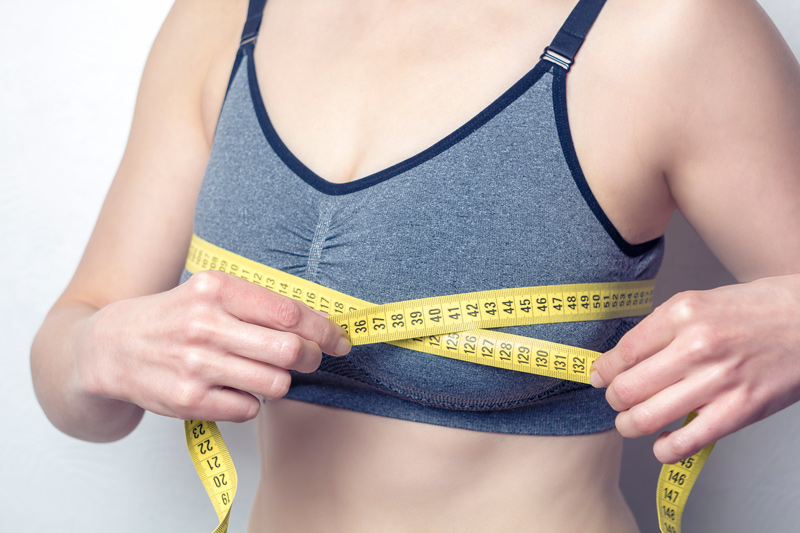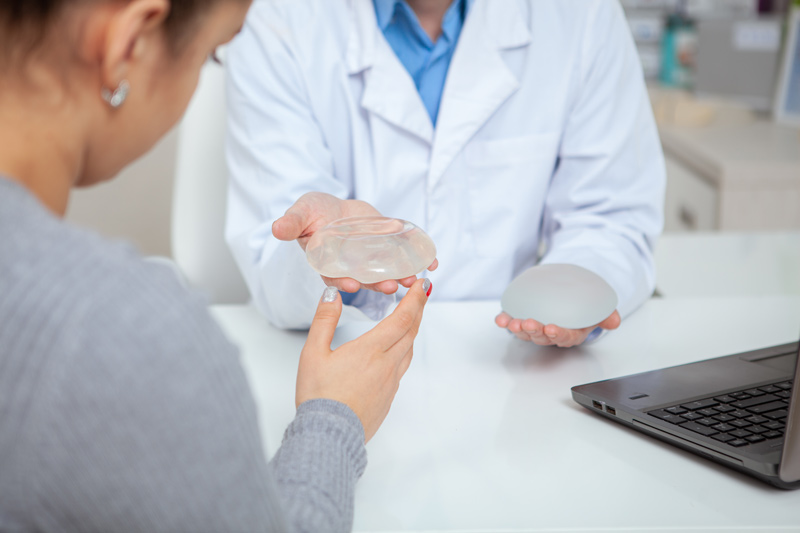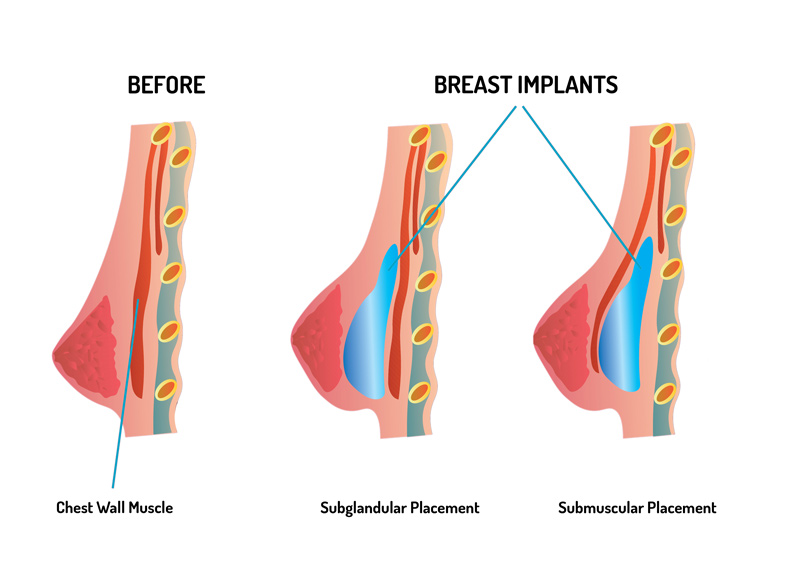Breast augmentation is the most popular cosmetic surgery in the country and has been for many years. However, deciding what kind of breast implant you would prefer for your augmentation can be confusing. There is so much information out there, and everyone has a different opinion on what the best choice is.

IMPLANT TYPES: SILICONE VS. SALINE
All breast implants have an outer shell made of silicone; the material inside is what makes them differ from each other. The type of implant you and your physician decide to use will depend on several factors, including your age, the results you are looking to achieve, and the placement of the implants (above or below your pectoral muscles). Implants come in a variety of sizes and projections (round or anatomically shaped), and the outer shell can either be smooth or textured. The most important thing is to take the information and make the decision that is best for you.
SALINE IMPLANTS
Saline breast implants are filled with sterile saline (saltwater) solution. They are approved for patients 18 years and older and come in a variety of sizes. These implants can be prefilled or filled with the saline solution after they are inserted, which allows for adjustments to be made.
STRUCTURED SALINE IMPLANTS
Structured (or “baffled”) saline implants are also filled with a saltwater solution, but these have chambers inside that make the solution behave more like a gel than a liquid. These implants feel more natural than regular saline implants; in the event of a rupture, the saline will still be absorbed into the body as with regular saline implants.

SILICONE IMPLANTS
Silicone implants are filled with a silicone gel. They tend to look and feel more natural than saline implants and are approved for patients 22 years and older. An MRI is usually required to determine if there was a rupture as the implants tend to keep their shape even after a leak has occurred. The FDA recommends you get an MRI 3 years after the initial placement of the implants and every 2 years after that to monitor for silent implant ruptures. Additionally, patients opting to go for larger silicone implants may require slightly longer incisions than would be used for saline implants.
“GUMMY BEAR” IMPLANTS
Also called “form-stable,” these implants are filled with a thick, cohesive silicone gel. They hold their shape even if the outer shell is broken and feel much firmer than other types of implants. This type of implant may also require a slightly longer incision for the implant to be inserted.
No matter what results you are hoping to see, your surgeon will help you choose the best implant type for you during your consultation. At your consultation, you will be examined to evaluate the amount of breast tissue you already have and the size of your chest wall. You will also have an opportunity to further discuss the procedure in more detail and ask any questions you may have.
If you are interested in your options for breast augmentation, fill out our online contact form today to schedule a consultation.
SUBMUSCULAR VS. SUBGLANDULAR IMPLANT PLACEMENT
Under the Muscle vs. Over the Muscle
After making a decision on what type of breast implant to use, the next big question has to do with how it’s placed—over or under the muscle. The debate over which method is best has been going on for years, with each technique having its unique benefits and drawbacks. The placement of the implant, along with the type of implant itself, is one of the major factors in determining what results a breast augmentation procedure will produce. Comparing both placements and finding out which works best for you is something Dr. Ceber’s office can assist you with before your breast augmentation surgery.

SUBMUSCULAR PLACEMENT
With submuscular implant placement, the implant is placed under the pectoralis muscles of the chest wall, keeping the mammary gland on top of the muscle.
Advantages:
This placement will make implants less visible, as the muscle acts as a barrier to conceal the corners of the implants and potential rippling. This is particularly beneficial for patients with thin breast tissue that wouldn’t adequately camouflage the implants as well as patients using saline implants, which tend to have an increased chance of showing wrinkling compared to silicone implants. Submuscular placement also tends to produce more natural-looking breasts. Dr. Ceber prefers submuscular placement because studies show a lower risk of capsular contracture (a complication caused by the thickening of scar tissue around the implant) with this method, but he works with his patients based on their goals and customizes the procedure based on their needs. Submuscular placement may also allow for easier mammogram readings and breastfeeding compared to subglandular placement.
Disadvantages:
Since the implant is placed under the muscles, submuscular placement can cause slightly more pain or discomfort post-operatively than subglandular placement. However, Dr. Ceber can inject a long-acting anesthetic during the surgery that can help with the discomfort for the first three days after your procedure.
When the implant is under the muscle, there is also a risk of animation deformity, meaning that certain movements of the chest or arms can cause the implant to move and be visible when disrobed or wearing revealing clothing.
SUBGLANDULAR PLACEMENT
The subglandular placement method puts the implant right under the mammary gland and over the pectoral muscle.
Advantages:
This type of placement generally produces a more augmented look, where the breasts are emphasized and tend to have more prominent cleavage. Subglandular placement offers a less painful recovery than submuscular placement, as Dr. Ceber does not have to manipulate the chest muscles. Subglandular implant placement tends to work best for patients with ample natural breast tissue to cover the implants.
Disadvantages:
Since the implant is only placed under the mammary gland, there’s no muscle to help cover any implant edges or rippling that may occur. Subglandular placement is also associated with a higher risk of capsular contracture, with the American Society of Plastic Surgeons estimating a 12 to 18 percent lifetime risk related to this method compared to a 4 to 8 percent lifetime risk with submuscular placement.
HAVE MORE QUESTIONS ABOUT BREAST AUGMENTATION?
Contact Us to Find Out the Best Options for You
Choosing which implant type and placement to use will be a decision that you and Dr. Ceber can embark on together based on your body type, your breast size and tissue thickness, and the results you expect. There is no clear-cut “right” or “wrong” method—just a method that works best to get you the look and feel you desire.
Your consultation will better determine which method and implant type is the best fit for you.
If you’d like to learn more about breast augmentation, schedule a consultation with Dr. Ceber at +90 546 776 9042.


